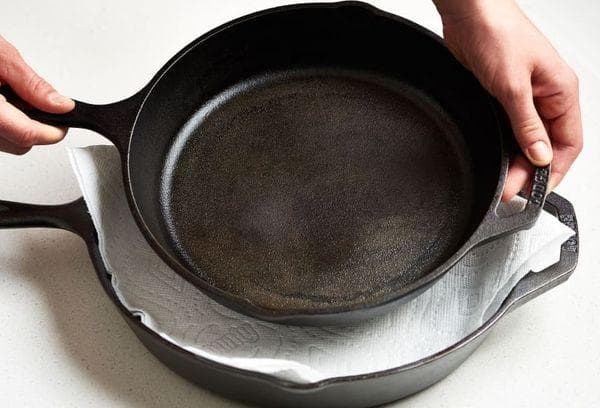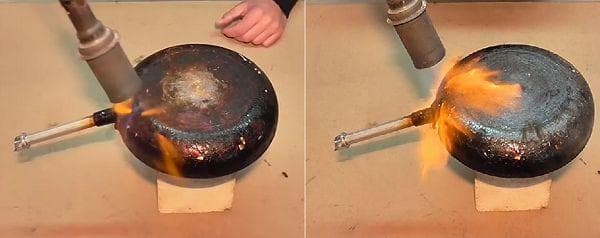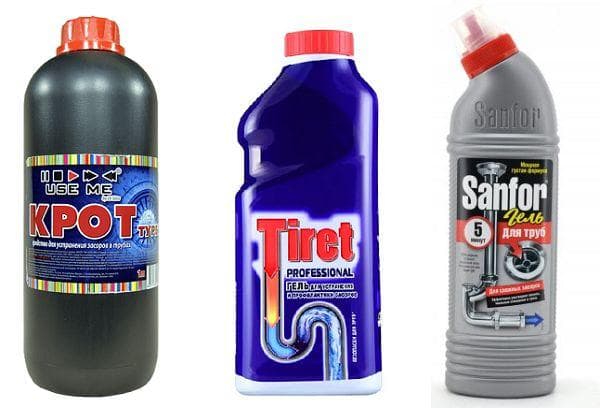My old frying pans shine like new after frying sand on them
Over time, metal utensils lose their shine and become covered with soot. Recently, I have been using one unusual method that allows me to wash my pans, returning them to their original appearance. Ordinary river sand helps me in this matter.
What kind of pans is this method suitable for?
If you still have an old cast iron frying pan in your home and often use it, sand cleaning is the ideal method. It can also be used for new cast iron products that have accumulated carbon deposits.

For the rest of the dishes, it is better to choose other, more delicate cleaning methods:
- Steel frying pans. Steel is a strong and durable material, but intense mechanical stress spoils it. When cleaning with hard brushes, the product will become scratched. Steel utensils can be cleaned well with acidic and alkaline agents and soft abrasives.
- Aluminum frying pans. Such dishes can only be heated over a fire if they have thick walls. Thin-walled aluminum frying pans will inevitably become deformed when overheated. Use household chemicals and folk recipes to clean them. For example, you can soak such a frying pan in a solution consisting of 10 liters of water with the addition of 500 g of soda, 200 g of silicate glue, 100 g of laundry soap shavings.
- Teflon coated pans. These products are easy to damage. They will best withstand washing in the dishwasher and boiling in a solution of dishwashing detergent.For such frying pans, it is strictly forbidden to use acidic compounds or rough mechanical cleaning.
- Ceramic frying pans. Dishes made from this material are almost free of carbon deposits, but you will still have to wash them regularly. To prevent cracks from forming on the ceramic, do not expose it to sudden temperature changes (this often happens when a frying pan is placed directly from the heat in the sink under running water). Do not use hard brushes or powders to clean ceramics. Wash the ceramic frying pan with a soft sponge and liquid solution.
If you want to use environmentally safe alkaline products (soda, laundry soap) to clean dishes, they can be used for cast iron, aluminum and steel frying pans. Dishwasher safe for any of the materials listed.
Where and how to clean a cast iron frying pan with sand?
Housewives use this method of “washing” a frying pan from carbon deposits as a last resort, when all other methods have not given a positive result. Personally, I wanted to throw away a couple of frying pans that were gathering dust on the mezzanine, without any hope of returning them to a decent appearance, until I came across a description of the process of cleaning cast iron cookware on the Internet. The result was truly impressive; in the photo the pans sparkled like new.
Where is the best place to carry out the carbon removal procedure?
The essence of cleaning is the heat treatment of a frying pan with sand poured inside, so you need to be prepared for the appearance of an unpleasant odor. It is best to do this kind of thing at the dacha, bringing there several heavily soiled pans from your kitchen at once.
If this is not possible, you will have to carry out the procedure in the apartment.While the frying pan is being heated over the fire, a window in the kitchen should be open, because breathing fumes in the form of acrid smoke is not at all beneficial.
How to use this method correctly?
You should not wash the stove before cleaning the frying pan; during the heating process, the carbon deposits will fall off from the outside of the walls and bottom in whole pieces. The debris can be removed later, at the same time wiping the space between the burners.
Cleaning process step by step:
- Remove the handle from the pan if it is not made of metal.
- Fill the bowl to the brim with dry sand.
- Turn on the gas at full power.
- When the pan is hot, reduce the heat to low.
- Periodically compact the sand by pressing it with a fork or tablespoon.
- The duration of the procedure is 3 hours.
- After the specified time, remove the frying pan from the heat and pour out the sand.
- Scrub the cookware with a wire brush while it is still warm.
If you are unhappy with the result (this can happen if the frying pan was initially very dirty), repeat all of the above manipulations again. Allow the cleaned cast iron to cool and grease its inner surface with vegetable oil.
Alternative options
If your plans do not include a significant time commitment, you can clean your cast iron skillet quickly and efficiently using two alternative methods.
By firing
Heat treatment of a frying pan may not necessarily involve the use of sand. Firing is carried out using a blowtorch, fire flame, or heat coming from coals. In an apartment, cast iron cookware can be burned by placing it in the oven.
The procedure time depends on the thickness of the deposit. You need to wait until the dirt softens under the influence of high temperatures and begins to peel off.If you use a blowtorch, it will only take a few minutes to remove carbon deposits.
Using a pipe cleaner
Yes, yes, don't be surprised. It is not necessary to use expensive chemicals to clean a cast iron frying pan. They can be replaced by an alkaline composition for cleaning sewer pipes. (“Mole”, “Tiret”, “Sanfor”). The same method can also be used to remove carbon deposits from steel utensils.
First you need to pour 1 liter of water and 500 ml of alkaline composition into a plastic bucket. Stir the contents of the container; a chemical reaction should occur. Now you can immerse the frying pan in the solution and wait for the carbon deposits to soak. After this, clean the dishes with a metal scraper. It is necessary to work with alkali using rubber gloves. Be sure to thoroughly rinse off any chemical residue from the pan.
As you can see, you can always make sure that your dishes stay clean. And the best thing is to prevent the appearance of a thick layer of plaque by regularly washing off even light deposits from the pans. Fortunately, there are plenty of ways and means for this.



